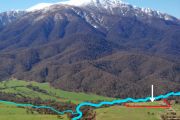
Game on for Sydney's next major tower site
A super development site three years in the making is quickly taking shape in the Sydney CBD with a series of covert deals worth about $300 million giving one developer control of 2000 square metres.
The unassuming cluster of buildings on the corner of Hunter Street and Pitt Street is part of one of four larger “tower cluster” sites near Circular Quay, Town Hall and Central Station that the City of Sydney has earmarked for potential development of up to 330 metres in height.
In contrast, Salesforce Tower in Circular Quay, on track to be the city’s tallest office building, is being built under the current rules to 263 metres in height.
It forms part of the City of Sydney’s draft planning strategy – the most detailed review of the city since the 1970s – to encourage increased density in a growing CBD with 467,000 jobs forecast for 2036.
Under the draft plan, the council has identified limited opportunities within the CBD to bolster office development by offering up to 50 per cent more floor space and additional height for development for non-residential uses – provided a minimum site area of 2000 square metres is met – in certain areas that won’t overshadow the city’s parks and key pedestrian areas.
It is understood local developer Milligan Group has acquired four buildings as well as a controlling interest in a fifth strata property – kickstarted with the sale of the corner property at 23 Hunter Street followed by the two properties on either side – after years of working behind the scenes to accumulate the assets from individual building owners and dozens of strata unit holders.
Calls to Milligan Group went unanswered.
Brad Hamilton, of Cushman & Wakefield, who represented the strata owners on the corner property, and Andy Hu, of Savills, who sold the adjoining buildings on Hunter Street, declined to comment.
Also falling within the identified “tower cluster” sites is a block of more than 2000 square metres wedged between Pitt, Bridge and Spring Streets, the majority of which is controlled by Dexus, the country’s largest office landlord, and its capital partner.
Dexus is in discussions with the City of Sydney in relation to planning outcomes for the site.
“There is the potential to create an exciting circa $4 billion (estimated end value) city-defining precinct, which we expect to be the next iteration of the iconic One Farrer Place,” a Dexus spokesperson said.
Lendlease is also likely to be a beneficiary of the City of Sydney’s draft plans, given its hold on a significant CBD site across the road between O’Connell and Spring Streets, also within the designated area.
Lendlease has made it clear it is a strategically held site as part of its investment in next-generation, sustainable precincts in transport-rich locations.
Given Sydney’s heated office market where cap rates for A-grade buildings are threatening to fall below 4 per cent, other investors looking to get their hands on a slice of the CBD have also been turning their attention to development sites as a way to find value.
The compulsory acquisition of sites by the NSW government for the construction of several metro stations in the CBD has created new development opportunities, allowing for property players to bid on large commercial tower developments planned above.
Superannuation fund-backed ISPT is set to be the latest winner of the new metro system after coming out on top as the final bidder for a near $1 billion tower above the planned Martin Place metro station being developed by investment bank Macquarie Group.
Another prime over-station development opportunity could arise when the state government announces the location of the CBD station for its new Metro West line. A location close to the corner of Hunter and Pitt Streets, where Milligan Group has amassed its properties, is expected to be chosen.
Lord Mayor Clover Moore said the Central Sydney Planning Strategy, which will be put on public exhibition in late March, was the product of three years of research that involved examining how the city functioned and where sunlight fell, block by block.
“We can build tall towers in the city, we can see our skyline rise with iconic, sustainable buildings. But we need to follow deep, evidence-based work that considers the current and future needs of our city, rather than entertaining ad-hoc planning proposals that only seek to increase private profit,” she said.
Despite the seemingly vast development opportunities earmarked by the City of Sydney, opportunities are nevertheless limited given many of the sites are already home to either large modern towers or heritage buildings.
“The mapped areas are areas that have no real height limitation other the obstacle height limits for the airports … but there are a number of sites that are mapped that simply wouldn’t be developed in the foreseeable feature,” Tim Blythe, managing director of urban planning consultancy firm Urbis, said.
“It’s my view council won’t achieve its aspirations in terms of long-term floor space growth without also looking at other areas outside of those tower clusters.”











